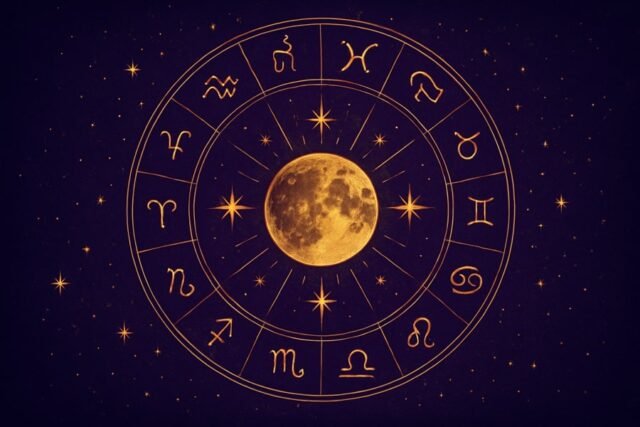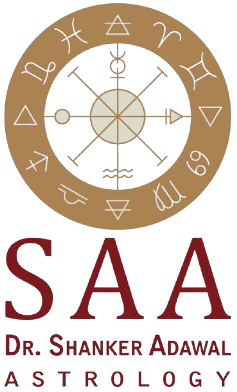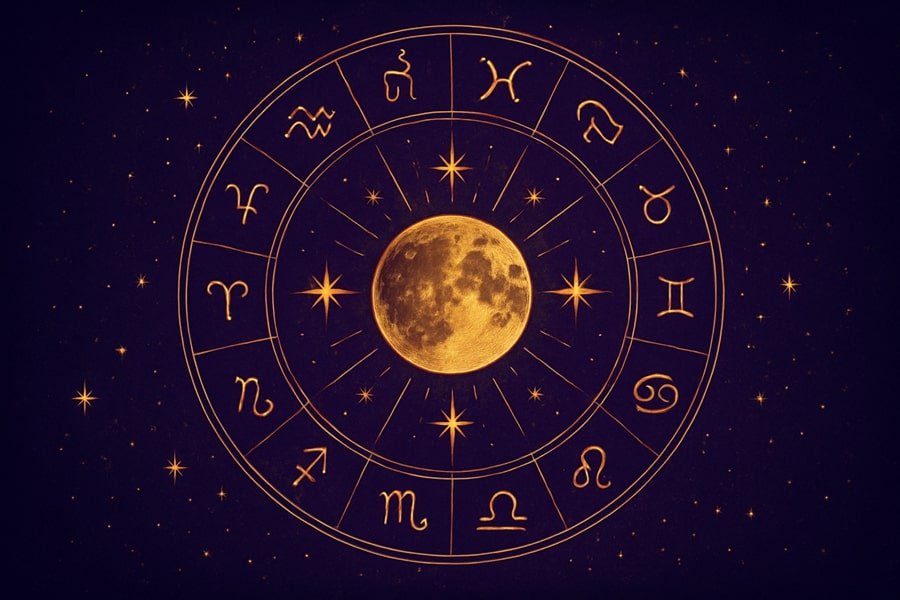 When we speak of astrology, most people immediately think of the twelve zodiac signs. Yet, beneath these broad divisions lies a subtler and deeper rhythm of the heavens—the nakshatras, or lunar constellations. There are twenty-seven nakshatras, each spanning 13°20′ of the zodiac, and they form the very heartbeat of Vedic astrology. While the rashis describe general personality traits, nakshatras dive into the soul, revealing desires, fears, and karmic patterns in far more detail. They are often described as the pulse of astrology, because they connect the movement of planets directly to the inner life of a person.
When we speak of astrology, most people immediately think of the twelve zodiac signs. Yet, beneath these broad divisions lies a subtler and deeper rhythm of the heavens—the nakshatras, or lunar constellations. There are twenty-seven nakshatras, each spanning 13°20′ of the zodiac, and they form the very heartbeat of Vedic astrology. While the rashis describe general personality traits, nakshatras dive into the soul, revealing desires, fears, and karmic patterns in far more detail. They are often described as the pulse of astrology, because they connect the movement of planets directly to the inner life of a person.
Each nakshatra carries its own symbolism, deity, and energy. For instance, Ashwini, ruled by the Ashwini Kumaras, represents healing, vitality, and new beginnings. Rohini, associated with beauty and abundance, has been celebrated in poetry for centuries. Moola, presided over by Nirriti, the goddess of dissolution, represents uprooting and transformation. These mythological associations are not just stories but living symbols that astrologers use to interpret the subtle motivations and turning points in human life.
The Moon’s placement in a nakshatra at birth is considered especially significant. Since the Moon governs the mind and emotions, the janma nakshatra describes one’s psychological makeup and approach to life. It influences not only personality but also compatibility, health, and destiny. Ancient traditions even used nakshatras to determine auspicious timings for marriage, travel, and rituals, showing how deeply ingrained they were in daily life.
Nakshatras also add nuance to planetary positions. A planet in Aries behaves differently if it is in Ashwini, Bharani, or Krittika. This is why two people with the same zodiac sign can still live completely different lives—the nakshatra adds the finer strokes to the cosmic painting. Similarly, the dasha system of astrology, especially Vimshottari, is based on the Moon’s nakshatra at birth, showing how central these constellations are to the unfolding of destiny.
There is also a karmic dimension. Many astrologers believe nakshatras carry imprints of past lives, pointing to lessons that the soul must learn in this birth. Rahu and Ketu, when placed in nakshatras, often highlight karmic debts or gifts. For example, Rahu in Ardra may bring restless ambition and desire for exploration, while Ketu in Ashwini could indicate healing abilities carried from past incarnations. The nakshatra framework thus provides not only prediction but also insight into the soul’s evolutionary journey.
For practical astrology, nakshatras are invaluable in timing events. Muhurta, the science of choosing the right moment, is largely based on the quality of the nakshatra at that time. Certain nakshatras are considered auspicious for beginnings, others for travel, and some for spiritual practices. This shows how nakshatras link cosmic cycles with the flow of daily human activity, making astrology a living guide rather than an abstract science.
Ultimately, nakshatras remind us that astrology is not just about broad categories but about subtle, living forces. They are the soulful pulse of astrology, revealing the fine threads of destiny that connect the human spirit with the stars. To study nakshatras is to listen closely to the whispers of the cosmos, guiding us toward self-understanding and alignment with the greater order of life.
Mobile: 9818733000
www.ShankerStudy.com – ‘Bridging Ancient Wisdom with Modern Astrology’
Tag2Adawal.blogspot.com – ‘Blending Astro Stories with Soulful Simplicity’
www.ShankerAdawal.com – ‘Profile of Success: Vedic Wisdom and Business Strategy’
www.AskShanker.Com – ‘Discover the truth – ask one burning question based on your Horoscope!’
www.shrikrishnapravahashram.org – Serving Souls & Healing with Compassion: Empowering Girls, Upholding Tradition, and Offering Food to Every Guest – ‘Atithi Devo Bhava’!

